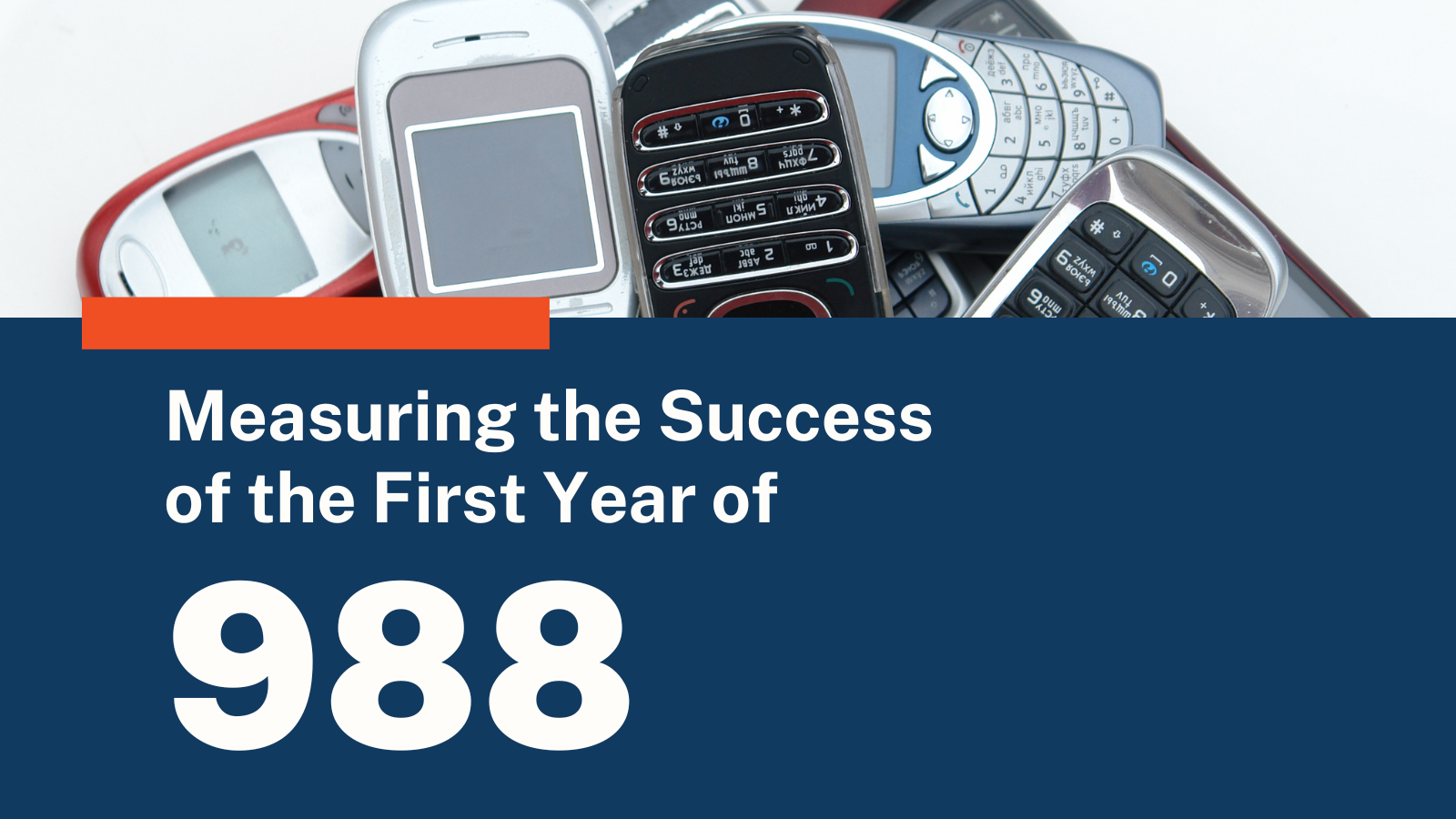This post was originally published on August 28, 2023, on the Safety and Justice Challenge website.
It has now been just over a year since the U.S. government allotted approximately a billion dollars to roll out a new nationwide phone number, 988, to call when people need help with a mental health crisis or behavioral health support. The goal of the initiative is to divert individuals in crisis to community-based services, including stabilization centers, rather than encounter law enforcement.
Over the past year, my organization has run a bimonthly virtual learning community for criminal legal systems around the country to help them with this transition. Twenty-eight sites involved in the John D. and Catherine T. MacArthur Foundation’s Safety and Justice Challenge (SJC) have attended the meetings focusing on operationalizing the 988 phone lines and associated crisis stabilization centers in their communities.
The mission of the SJC is to lower jail populations in participating communities across the country so the goals of the 988 system are aligned. It is still difficult to empirically measure how many people are staying out of jail because of 988. If someone avoids arrest and is instead diverted to a stabilization center or other community-based service after a 988 call, instead of a 911 call, there is simply no arrest in the public record. Still, the usage of the 988 lines has been promising.
In the first year of implementation, people placed five million calls, chats, and texts to 988 across the country. That’s a 35 percent increase in calls to the federally run suicide prevention line (1-800-273-TALK) it replaced. It includes 665,000 texts, more than a 1,000 percent increase over texts to the old suicide prevention number. By simplifying the process of seeking assistance with a three-digit number, people are more likely to call.
In addition to serving as a Strategic Ally of the Safety and Justice Challenge, I have worked for the past 20 years as a mobile crisis response counselor in Southeast Nebraska. My role has been to assist community members in crisis, whether they are suicidal or homicidal. In the past year, I have seen and heard locally how the 988 number has eased the burden on overstretched law enforcement officers. However, there is now a workforce concern in the behavioral health field. As 988 lines become more successful, communities across America will need to address gaps in the behavioral health system. This is a significant challenge.
Some sites are advanced in their implementation of the 988 number, and others are still coming up to speed. More populated states, such as California, have multiple 988 centers. Others, such as Nebraska, have just one. There are also some concerns about cell tower coordination. For example, if somebody with a Nebraska number calls 988 in California, there is still some concern that their call could route to a center in Nebraska by mistake. That costs time when individuals in crisis face emergencies, but we expect these concerns to be worked out soon.
Meanwhile, three examples of SJC sites and their experiences of implementing the 988 number are as follows:
- In Harris County, Texas, the first-year rollout has gone well. At first, there was some concern about the line being overwhelmed, and the volume did increase significantly in the first few months. The staff have now acclimatized, and the system is proving effective.
- In Middlesex County, Massachusetts, working partners integrated 988 planning into their existing “Roadmap to Behavioral Health Reform” plan. Over 50 city dispatch centers in Middlesex County were previously surveyed—before the implementation of 988—to gather information on their call codes and who is dispatched for mental health-related calls. Findings demonstrated little consistency across these dispatch centers. There are currently five 988 call centers in Massachusetts, which is more than almost any other state and represents a significant investment in 988.
- In the “Embedding Equity into 988: National Scorecard,” only two states referenced reaching out to older adults. One of those two states is South Dakota. It is noteworthy that only South Dakota and Alaska specified strategies, materials, or efforts to reach older adults through their 988 implementation approaches since older adults are especially vulnerable to suicide or mental health crisis with causes ranging from grief and isolation to chronic illness. In South Dakota, both Minnehaha and Pennington Counties are part of the MacArthur Foundation’s Safety and Justice Challenge, with the two communities on opposite sides of the state.
Meanwhile, state legislators in more rural areas have shown a lack of knowledge about 988. They will be key allies in securing funding to support ongoing implementation, so it remains important for there to be more conversation and awareness building about the value of 988 as a public safety measure.
While there is clearly a good deal of work remaining across our states and territories until we can consider 988 to be fully implemented, there are positive signs in the first year of 988’s implementation. I expect that together, in the years ahead, we will continue to build on the momentum we have created so far and offer anyone in need of behavioral health support and/or services an excellent alternative to first dialing 911.


